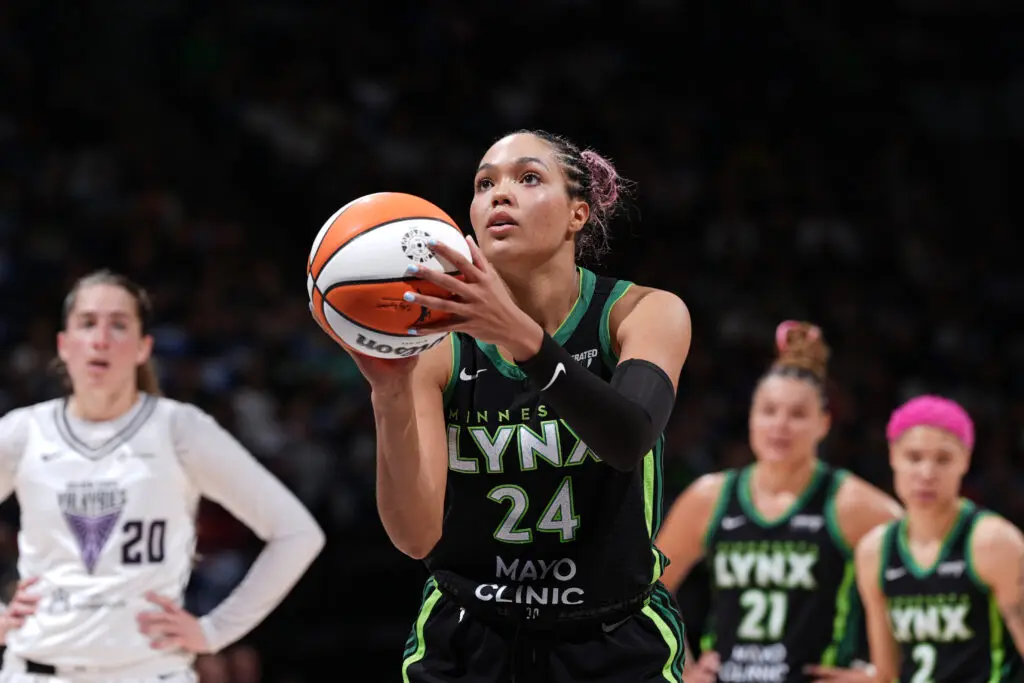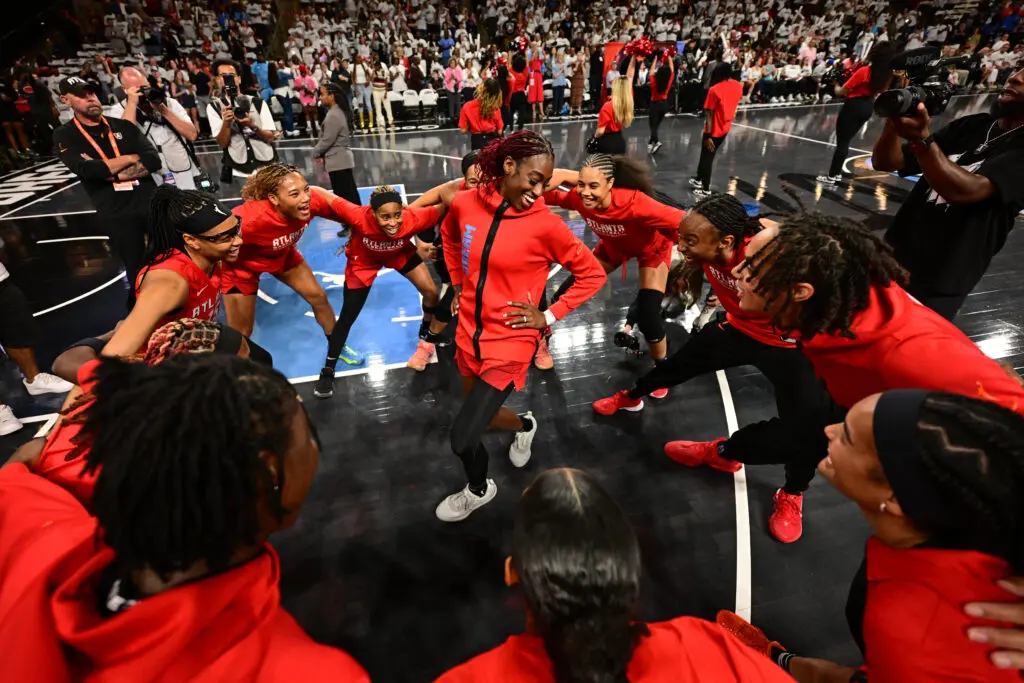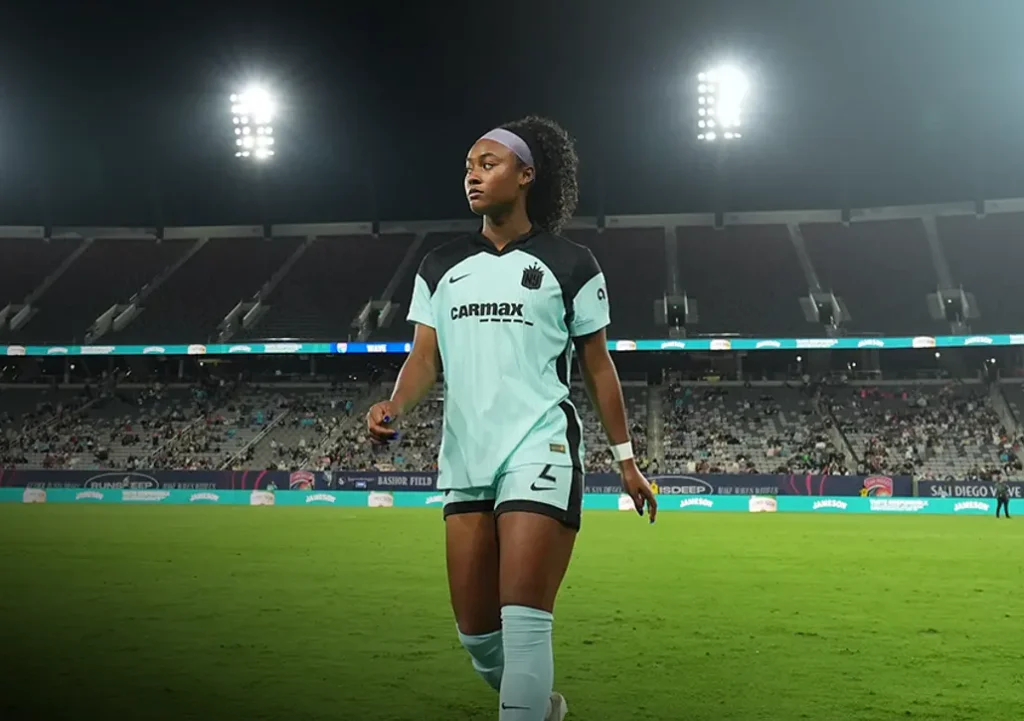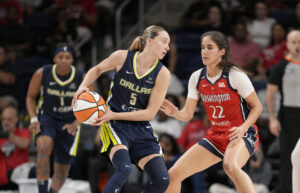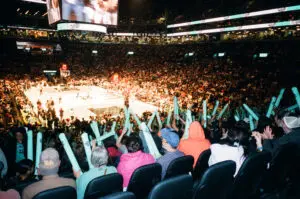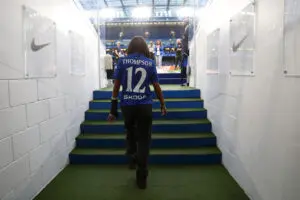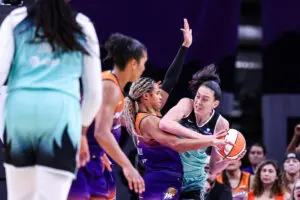U.S. Soccer shook up the international game with one simple announcement on Tuesday morning: Julie Ertz is going to be playing professional soccer in April. The defensive midfielder returns to the U.S. women’s national team roster for the first time since the Olympics in 2021, having also not played in the NWSL since May of that same year.
Ertz battled a knee injury to return to the USWNT in time for a bronze-medal performance in Tokyo, and since then has taken time off for the birth of her son Madden in August 2022.
Prior to her absence, Ertz was a USWNT mainstay as the defensive-minded conductor of the midfield that the team has struggled to replace since the Olympics.
Why the U.S. needs Ertz back
Head coach Vlatko Andonovski’s decision to bring Ertz back into the fold raises questions about the team’s inability to imagine a future without her. The team has relied heavily on the Washington Spirit’s Andi Sullivan in a similar role with varied results. Sullivan is a possession-style player, which differs from Ertz’s ability to cover an immense amount of space defensively. The U.S. also tried Kristie Mewis, Lindsey Horan and Taylor Kornieck in similar roles, playing more attacking-minded midfielders out of their natural positions.
Andonovski’s U.S. has experimented with help defense in the seams between the central defense and the attacking midfield, but it has never quite committed to the dual-No. 6 pivot likely necessary to fill defensive gaps and move the ball forward consistently. In some games, like the USWNT’s SheBelieves match against Canada, the current midfield has looked fluid and effective. But in others, like the USWNT’s SheBelieves match against Japan and friendlies against top European sides in 2022, the middle of the pitch became an area of weakness.
“We’re excited to have Julie back. We know the quality of the player that she is, and that if she comes anywhere near her best, she will certainly help us win a World Cup,” Andonovski told the media after the roster announcement.
The coach’s statement is as much an encouraging sign as an acknowledgement that the team still needs a bruising defensive midfielder who can disrupt and re-distribute.
Ertz not only has the ability to progress the ball through short and simple passes, but she can also recover turnovers that occur in front of her when she is in full control of her explosiveness. Horan, Rose Lavelle and Ashley Sanchez have the creativity in the attacking midfield to draw defenders in and create space for the USWNT’s arsenal of winger talent, but when the ball is misplaced, the team has struggled in defensive transition. When you play high-risk, high-reward passes, you have to have a plan for how to adjust when challenged, and a healthy Ertz papers over the cracks in the system.

The unknowns of Ertz’s return
Despite the optimism surrounding the announcement, there’s actually no guarantee Ertz is fully healthy, though Andonovski expressed full confidence in her high-performance setup.
“I had a chance to see some of the training and firsthand, training with MLS Academy boys,” he said. “She trained with a personal high-performance coach, or personal technical coach, and was up to the level that a lot of professional players were training, or sometimes even harder.”
Despite her extensive personal training, Ertz hasn’t played a professional soccer game in over 600 days, something Andonovski said she is trying to rectify. The 30-year-old now becomes the highest-profile NWSL free agent still on the market. What her sprint speed looks like, how her touch on the ball adjusts, and how many minutes she can play at the highest level will determine whether the benefits of bringing her back outweigh the costs.
Calling into camp a player who has not trained with a club team for so long flies in the face of Andonovski’s repeated claims that current form matters when making roster decisions. The U.S. has spent months building a young group into a new core for both the present and the future, and inserting a very different type of player threatens to upset the delicate balance of roster personalities.
But also, if Julie Ertz is available, how do you say no?
“If somebody’s 80 or 90 percent is still better than somebody else’s best, then too bad,” Andonovski said. “Anyone that will help us win the World Cup will be considered.”
Those cases have to be considered carefully, he continued, with the understanding that the team can’t carry too many injuries into a grueling international tournament like the World Cup. But since the current squad has been unable to find a definitive answer for a position of need, all other options will be considered.
Ultimately, the decision to bring Ertz in as a defensive specialist and a leader might be exactly what the U.S. needs. Or it could further imbalance a roster on a tight-rope act between the past and the future.
“As everyone else, she will have to earn some minutes,” Andonovski said. “Nothing is going to be given.”
Claire Watkins is a Staff Writer at Just Women’s Sports. Follow her on Twitter @ScoutRipley.

